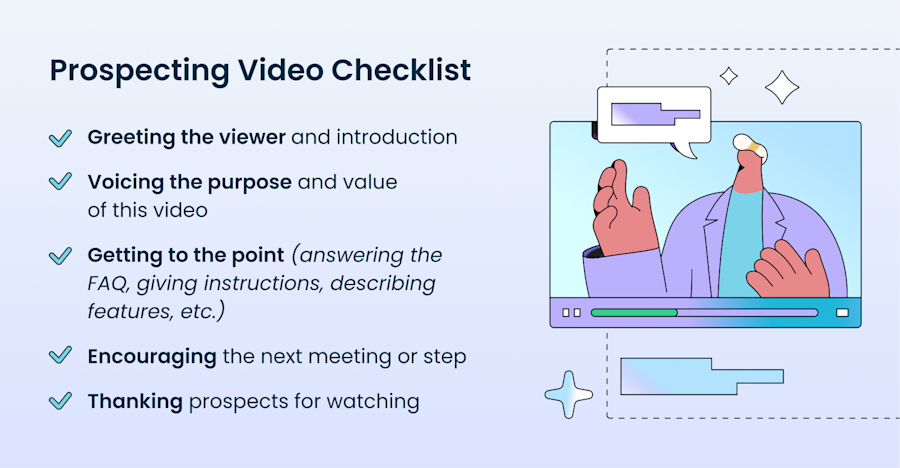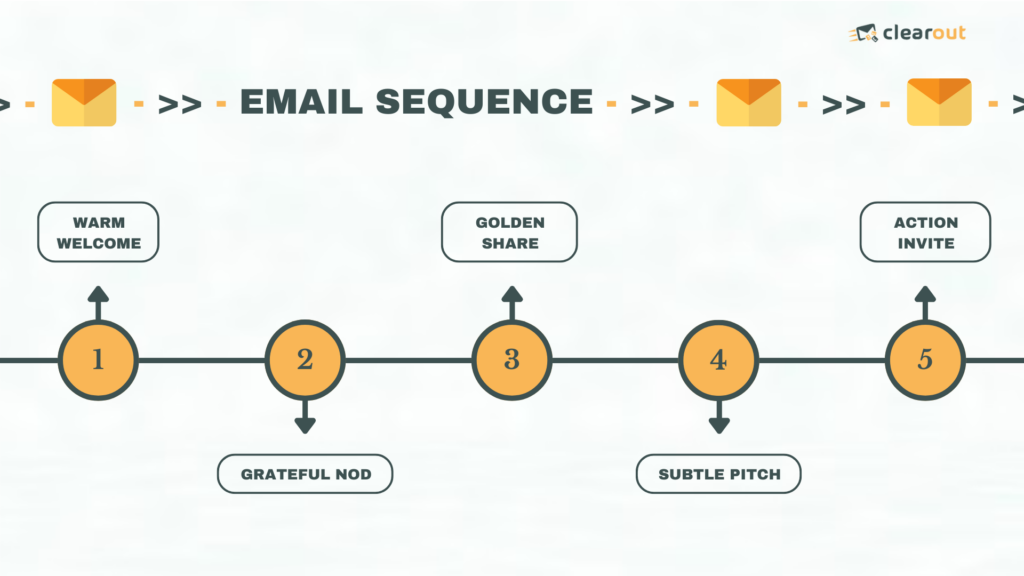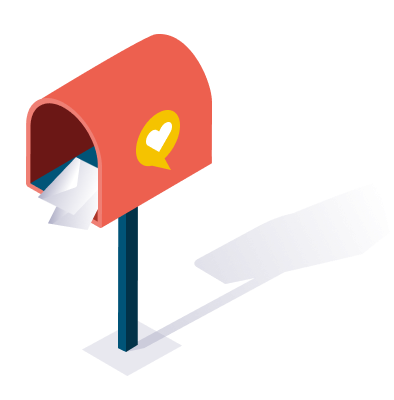Outbound sales have evolved. Find out how warm calling, social selling, and video-first strategies are helping teams drive higher engagement and conversions.
A decade ago, the sound of ringing phones and rapid-fire pitches filled sales floors. Today? Those once-bustling "boiler rooms" are quiet.
Does that mean outbound sales are dead? Not even close.
What died is the generic approach. You know, the one where sales reps would blast through contact lists without doing homework, hoping someone would bite.
Modern buyers are way too sophisticated for that nonsense. They've got caller ID, they do research, and frankly, they're tired of being interrupted by people who clearly don't understand their business.
The companies winning today know this: buyers don’t want to be sold to; they want to be helped. Let’s explore the outbound tactics that actually resonate.
Is Cold Calling Really Dead?
Here's where things get interesting. The numbers look grim at first glance—cold calling success rates dropped from 4.82% in 2024 to just 2.3% in 2025. That's basically half the effectiveness in one year.
If you scratch below the surface, you will find a very surprising fact: 57% of the C-suite members prefer to be called over being emailed or messaged on LinkedIn.
So, the problem isn't the phone itself. It's how people are using it.
Most sales reps are still making calls as if it were 2010, hoping to catch someone at their desk who has nothing better to do than listen to a stranger pitch them software.
Meanwhile, 96% of prospects conduct their own research before speaking with a salesperson. By the time someone answers your "cold" call, they've probably already looked at your website, read reviews, compared you to competitors, and formed an opinion about whether they need what you're selling.
But here's where it gets really interesting. Some companies are bucking this trend completely. Take Cognism, for instance. While everyone else is seeing their success rates tank, they're hitting 6.7%. Nearly three times the industry average.
Their secret? They completely threw out the old playbook.
Research shows fascinating patterns about what works now. Keep calls under 5 minutes, and your success rate stays strong. Go longer, and it drops by 61%.
These aren't random statistics; they reveal something important about how buyer psychology has shifted.
The Shift to Modern Outbound Sales
In any modern sales office, you'll find reps digging into LinkedIn profiles, shooting quick videos, and putting together campaigns that touch prospects across multiple channels.
What changed everything? Three big shifts in how outbound sales tactics actually work:
- Precision > volume
- Personalization is non-negotiable
- Outreach spans channels: phone, email, social, video
Companies that research their prospects before calling are seeing a significant boost in conversion rates.
That's not some minor bump; that's the difference between crushing your number and wondering what went wrong.
Smart sales teams run their outreach more like conducting an orchestra. Every email, call, LinkedIn message, and video plays together to create something that feels helpful instead of pushy.
Here's the kicker: most deals close after the 5th touchpoint, but most reps bail after just 2.
Modern Outbound Tactics That Work
Here are the most impactful tactics that offer a good result for outbound sales:
Warm Calling Over Cold Calling
Sarah's story happens every day in sales. She's a B2B outbound sales rep who was stuck in a rut: 100 calls daily, maybe one meeting booked if she got lucky.
Fed up with the grind, she switched things up. Started spending half an hour each morning actually researching her prospects on LinkedIn, checking out company news, and engaging with their posts.
Two months later? Sarah went from 4 meetings per month to 15.
What made the difference? She stopped cold-calling strangers and started having warm conversations with people she'd already connected with online.
This is a warm calling to action. As viable sales techniques, savvy sales representatives now monitor prospect activity on company websites, engage with their social media posts, and utilize mutual connections for introductions.
Video Prospecting
Picture this scenario: busy executive, 47 unread emails, and decision fatigue setting in. Two messages catch their eye.
One starts with "Hope this email finds you well". The other shows a real person who mentions their company's recent Chicago expansion by name.
Guess which one gets opened?
Since video prospecting addresses the issue of authenticity, it is effective. Something miraculous occurs when potential customers can see your face and hear your voice; you cease being merely another salesperson and transform into a genuine person with valuable insights to offer.
That's why over 90% of consumers want more video content from brands.
Tools like Vidyard and Loom have made video creation ridiculously easy. The results speak for themselves: campaigns that lead with video perform better than traditional email sequences.
Even more impressively, 83% of qualified opportunities come from campaigns where video gets sent first.
 Image Source
Image Source
Email Sequences and Automation
Let's address the elephant in the room: isn't email basically dead? With spam filters becoming increasingly sophisticated and inboxes becoming increasingly crowded, many sales teams have written off email altogether. Big mistake.
Any sales strategy must include email marketing, as it offers a double return on investment compared to cold calling.
Modern email sequences combine real personalization with the efficiency of automation. Using tools like HubSpot, Outreach, and Salesloft, sales teams craft complex campaigns delivering relevant information based on real-world prospect behavior.
Most effective teams view A/B testing as a scientific experiment. To maximize effectiveness, they test call-to-action buttons, message content, and subject lines constantly.
 Source
Source
LinkedIn Outreach and Social Selling
LinkedIn has become the true B2B playground. In fact, 80% of B2B leads generated by social media come from LinkedIn, and the response rate averages 10.3%, more than double the response rate from cold email.
The best LinkedIn programs effectively combine content sharing, strategic engagement, and personalized outreach. Smart salespeople share industry insights, thoughtfully comment on their prospects' posts, and send connection requests that reference a particular shared interest.
Additionally, an Incumbent InMail message would generate 300% more responses than a standard email. This shows when sales reps meet prospects where they're already active; the engagement is much stronger.
Account-Based Outreach (ABM)
Let's say you work for a software company, and your dream is to acquire a Fortune 500 company as the biggest client ever.
Do you just send them the same template everyone else is sending? Or do you go to great lengths to formulate a very particular approach that resonates with their business, challenges, and goals?
This is the next step in outbound sales, focusing sales and marketing teams' attention on the highest-value targets through a harmonious, multi-touch campaign.
Account-Based Marketing (ABM) is the natural evolution of outbound sales, where sales and marketing teams focus their efforts on high-value targets through coordinated, multi-touch campaigns.
ABM campaigns are defined by:
- Tailored content specific to each account
- Consistent messaging across channels like email, LinkedIn, and video
- Collaborative execution between sales and marketing to address account-specific pain points
It’s not about more outreach; it’s about smarter, more strategic engagement that drives real results.
Here's the thing about technology in sales today: it's leveling the playing field in ways nobody saw coming. A startup with smart tool choices can now go head-to-head with massive enterprise teams that have budgets ten times bigger.
- CRM as the Foundation: You'll need a basic CRM setup, such as HubSpot or Salesforce, whatever works best for your team. But where things get really interesting is with data quality.
- High-Quality Data Tools: Tools like Apollo and ZoomInfo provide phone numbers that are most likely to work, with a high success rate. No more calling numbers that got disconnected three months ago.
- Multi-Channel Engagement Platforms: Next are engagement platforms like Outreach, Salesloft, and others that let you simultaneously run campaigns on social media, phone, and email. The information these tools provide you about what's truly functioning is more valuable than the automation alone.
And yes, AI is everywhere now. Three-quarters of B2B companies are planning to use it for calling by next year. The reps who've started using AI tools? They're seeing their leads and appointments jump by 50%.
Metrics That Matter in Outbound Sales
Modern sales teams track different metrics because they're playing a different game.
Effective teams give priority to outcome-based measurements, whereas older approaches primarily focused on activity indicators.
- Response Rates: Response rates show how well your message is received by your target audience. Prospects aren't impolite if they ignore you; rather, it's because your message isn't compelling or relevant enough.
- Win Rate: It is the percentage of opportunities that close successfully. Analyze win rates by deal size, competitor, and sales stage to identify improvement areas. Final Words
- Conversion Rates: These rates measure the percentage of interactions that result in meaningful next steps, like scheduled meetings or product demonstrations.
Final Words
Evidently, traditional cold calling isn't completely dead. It's just growing up. What we're seeing now is a shift toward smarter, more thoughtful approaches that actually help people instead of annoying them. The reps who get this are crushing it in 2025.
The successful strategy of today combines modern customization with old-fashioned perseverance. Businesses that use targeted account tactics, LinkedIn relationship building, clever email marketing, and video outreach? While everyone else is struggling with yesterday's strategies, they are enjoying the growth of their pipelines.
What comes next? Outbound marketing is viewed as connection development by sales professionals rather than interruption marketing. You'll receive the results that traditional cold calling promised but rarely delivered if you focus on assisting first and selling second.
Want more insights like these? Explore expert tips, actionable guides, and the latest trends in modern sales at The Next Scoop—your go-to source for smarter digital growth!
Subscribe to weekly updates
You’ll also receive some of our best posts today





